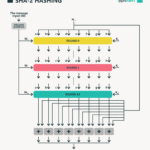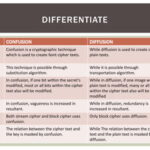AES-256 encryption, or Advanced Encryption Standard with a 256-bit key, has garnered significant attention in cybersecurity and data protection spheres. It stands as a robust encryption algorithm, widely regarded as a benchmark for securing sensitive information. However, while its properties may conjure visions of impenetrable fortresses safeguarding priceless data, a thorough examination unveils both its manifold advantages and inherent drawbacks.
The prevalence of AES-256 stems from its impressive strength. Its key size is precisely what bestows the algorithm with exceptional security—over 1.1 sextillion possible keys. This astronomical number produces an encryption that is, theoretically, impervious to brute-force attacks by existing technology. When considering cryptographic safeguards for highly sensitive data, such as government secrets, financial transactions, or personal identifiable information, AES-256 emerges as a prime choice.
Moreover, AES-256 encryption is designed to operate efficiently on various platforms, encompassing everything from sophisticated servers to handheld devices. This adaptability ensures that robust security is accessible not only to IT professionals and large enterprises but also to individuals seeking to secure personal data. In an era marked by the increasing prevalence of cyber threats, this versatility is paramount.
Another noteworthy aspect is the standardization of AES-256. Its adoption was ratified by the National Institute of Standards and Technology (NIST) in 2001, which established a foundational trust within the cryptographic community. The eminent backing by a recognized authority not only provides a sense of legitimacy but also encourages widespread implementation across architectures, applications, and devices. This endorsement is pivotal as it translates to a uniform level of security assurance shared globally.
As organizations become cognizant of regulatory mandates and compliance requirements, AES-256 serves as a viable answer to a plethora of legislative frameworks. For example, the Health Insurance Portability and Accountability Act (HIPAA) and the Payment Card Industry Data Security Standard (PCI DSS) emphasize the necessity of safeguarding sensitive information. Implementing AES-256 encryption enables organizations to meet these stringent standards, reducing the risk of data breaches and the exorbitant fines that may accompany them.
However, in the realm of cryptography, no system exists without its share of caveats. While AES-256 is robust, the efficacy of encryption hinges significantly on key management practices. Many organizations struggle with the operational logistics of safeguarding cryptographic keys. If adversaries gain access to the encryption keys—whether through negligence or inadequate security measures—the entire encryption paradigm crumbles, rendering AES-256 ineffective.
Another point of concern involves the potential for overreliance on AES-256. In an age where sophisticated attackers leverage various means and methods to infiltrate systems, depending solely on a single encryption standard can lead to a false sense of security. Cybersecurity is multi-faceted; thus, adopting a layered defense approach incorporating other protective measures, such as intrusion detection systems, network segmentation, and security training, is essential.
In addition, the performance implications of AES-256 cannot be overlooked. While it offers remarkable security, the computational burden associated with handling 256-bit keys may result in slower processing times compared to lighter encryption algorithms. For resource-constrained environments or real-time applications, these performance issues may pose significant challenges. Consequently, organizations must weigh the trade-offs between security and operational efficiency carefully.
Another pitfall lurks in the potential for misconfiguration. The complexity of proper AES-256 implementation often leads to vulnerabilities. Inexperienced practitioners may inadvertently weaken the encryption by applying flawed configurations or utilizing outdated libraries. Such mistakes can create exploitable vectors, undermining the very purpose of encrypting sensitive data. Thus, deploying AES-256 requires a knowledgeable approach to maintain its integrity.
Moreover, as computational power continues to escalate, future concerns arise regarding post-quantum adversaries. While current quantum computing capabilities remain largely theoretical, there is ongoing discourse about their potential to undermine traditional cryptographic standards. AES-256 is often cited as being resistant to quantum attacks due to its longer key length; however, the apprehension persists. Acknowledging these emerging threats is crucial for future-proofing encryption strategies.
In summation, the adoption of AES-256 encryption is replete with benefits, including formidable security, standardization, adaptability, and compliance facilitation. However, to harness its full potential, attention must be paid to key management, performance implications, misconfiguration risks, and upcoming technological developments in quantum computing. As organizations aim to safeguard their assets in an increasingly perilous digital landscape, a balanced understanding of the merits and pitfalls of AES-256 encryption is essential. The ongoing quest for data security dictates a rigorously informed approach, ensuring that the armor put in place is as resilient as the threats that loom ever nearer.









Leave a Comment